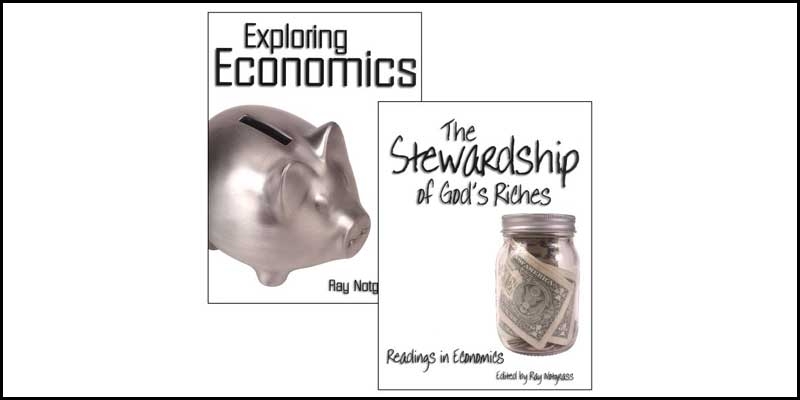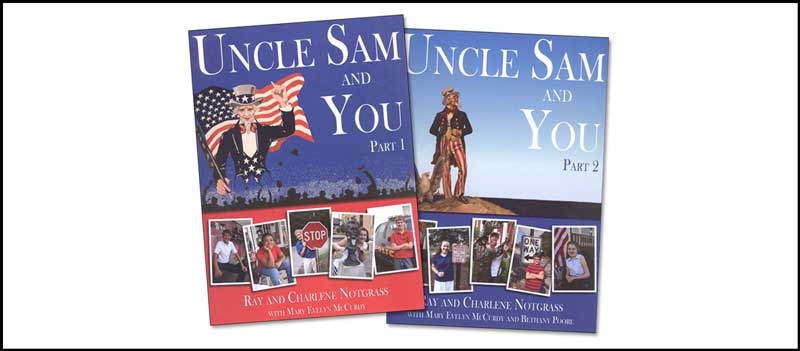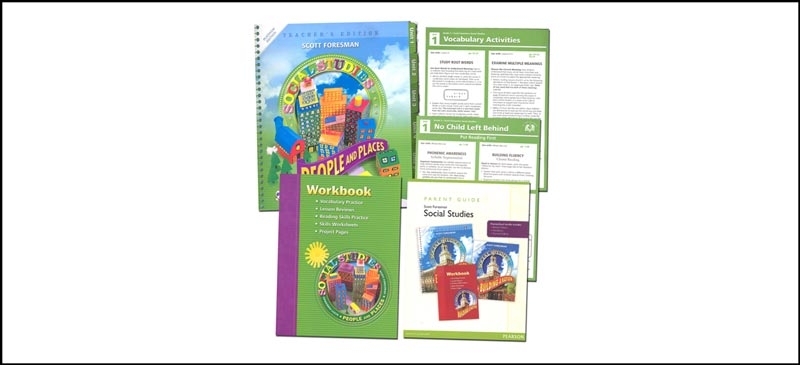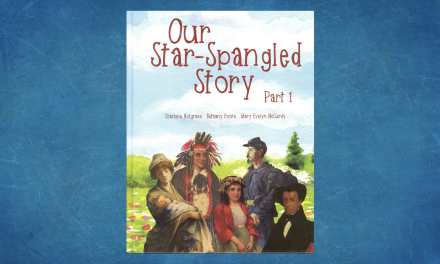 It’s as amazing as it always was – and yet it’s so much better! For years BiblioPlan meant a series of four time-period-specific planning guides for world history. Using a spine and incorporating first-rate literature suggestions, they provided the framework for anyone wanting to study world history chronologically and classically. Then a few years ago, they started adding components – and we wondered exactly where they were headed. Now we have a good idea – and it’s looking good. The name BiblioPlan is still synonymous with classical chronological world history but what is available now is a full-bodied, full-color curriculum rather than a framework. It’s comprehensive and thorough while providing ease of use and minimum teacher prep. They allow students of all ages to work on the same eras at the same time. There’s also flexibility. You can still use just the framework (Family Guide) or you can add some or all of the components. You can take a general approach and incorporate multiple ages at once – or you can use material that targets particular education levels (i.e., upper middle school). Older children can help younger children and children of all ages will be making memories as they work together. Biblioplan puts you in the driver’s seat with full controls.
It’s as amazing as it always was – and yet it’s so much better! For years BiblioPlan meant a series of four time-period-specific planning guides for world history. Using a spine and incorporating first-rate literature suggestions, they provided the framework for anyone wanting to study world history chronologically and classically. Then a few years ago, they started adding components – and we wondered exactly where they were headed. Now we have a good idea – and it’s looking good. The name BiblioPlan is still synonymous with classical chronological world history but what is available now is a full-bodied, full-color curriculum rather than a framework. It’s comprehensive and thorough while providing ease of use and minimum teacher prep. They allow students of all ages to work on the same eras at the same time. There’s also flexibility. You can still use just the framework (Family Guide) or you can add some or all of the components. You can take a general approach and incorporate multiple ages at once – or you can use material that targets particular education levels (i.e., upper middle school). Older children can help younger children and children of all ages will be making memories as they work together. Biblioplan puts you in the driver’s seat with full controls.
Ancient, Medieval, and Modern America & World History are completely revised and all components are available. Early America & World History is currently “under construction” and will be available early in 2014. The unrevised versions are still available but are listed separately to avoid confusion.
BiblioPlan Family Guides provide the structural framework for the program – a full year’s worth of history and literature readings. There are four Guides, one for each of the four classical (chronological) time periods – Ancient, Medieval, Early America & World, and Modern America & World (inspired by the Well-Trained Mom). This is the product that used to BE Biblioplan. In other words, when you said Biblioplan these guides are what you meant. Designed by a group of homeschooling moms for themselves, this guide gives you 34 weekly spreadsheets; each a comprehensive lesson plan. Their goal was to integrate quality historical literature with biblical and secular history. They put together an easy-to-follow plan which requires minimal parental prep covering the historical topic (Classtime), a Psalm study, References and Resources for textual information about the topic, Literature selections of the Week (for grades K-2, 3+, 5+ and 8+), a Family Read Aloud suggestion, Writing Ideas, Optional Fiction & Resources, and suggested Activities. Introductory information includes the usual “how to find books” and “how to use the plan” information as well as the book lists for both the scheduled and the optional literature. If your family includes older students, then you’ll be glad to know that a supplement for high school is included. There’s more! Prior to each Era (for instance, Early Christianity and the Rise of Islam, Europe & the Crusades, etc. for the Medieval history) there are several additional pages of reference material – annotated book lists for the Readers, the Family Read Alouds, and the Optional Resources/Fiction.
If it sounds like the Family Guides might be all you need – you would be correct. They’re comprehensive and thorough; in general, well-constructed plans. You could complete four years (plus four more if you wanted) of interesting history, absorbing literature, and engaging activity possibilities using just these Guides. You may also want to ensure you have access to some or all of the frequently-referenced “spine resources” if you go this route. These include Story of the World, Mystery of History, The Kingfisher History Encyclopedia, The Usborne Encyclopedia of World History, or History of US. However, if you like to have perfectly coordinated, quality material at your fingertips – rather than scrambling for it – then you can incorporate one or more of the following components.
BiblioPlan Companion – one for each time period. Essentially, these are historical textbooks – but not like any you’ve seen before. For one thing they provide both textual information (in a narrative prose style) and enrichment supplements. For another, they’re spiral-bound so they lay flat and color-coordinated so you know instantly if you’re reading history text (black & white) or about people and special events (various colored backgrounds). These are books which beg to be pored over. In the random pages open before me from the Medieval Companion, there is a section on Muslim food laws and their rituals for newborns, a description of a tughra (Ottoman sultan’s signature) with gorgeous, artistic examples and a Turkish paper decorating technique – ebru. In the Giants of the Faith section is a biographical sketch of Saint George and the Dragon which continues onto the next page and includes a large, glorious artwork reproduction of the same. There is a pattern to the information provided for each chapter (34 in each Companion – one for each week): Geography Focus, History Focus, Fascinating Facts, Mystifying Myths, Interesting Individuals, Fascinating Foods, Church History Focus, Critical Concepts, and Giants of the Faith. Just in case there’s any doubt, the Companions – and all the BiblioPlanmaterials – have a consistent biblical and Christian worldview. The Companions provide all the necessary textual information for the Classtime and greatly reduce, or even eliminate, the need for any outside historical reference books or spines. That being said, some may still choose to use the recommended spine readings in order to provide even more historical perspective and textual information.
BiblioPlan Cool History provides weekly assignment sheets at four different grade level groupings – Littles (K-2), Middles (2-6), Upper Middles (6-8), and Advanced (8-12). It’s pretty easy to surmise that the goal of these is to allow a family to challengingly study the same time period and the same topics but at their own distinct levels. Templates for a year-long project – Giants of the Faith Book – are provided along with coordination of coloring pages (lower levels), Giants of the Faith suggestions, and hands-on activities (i.e. crafts, again for the lower levels). There are subtle grade-appropriate variations in the levels but these pages include reading assignments and questions taken from the Companion readings. The Littles book has suggested reading assignments that point to certain sections of the Companions of interest to younger students and Globe Fun (introductory map activities). The Middles and Upper Middles have an Optional Bonus Question or Activity. Both the Upper Middles and the Advanced include periodic (about every six weeks) exams. The Advanced assignment sheets have assorted questions – fill in the blank, short answers, short essays (all taken from the Companions) and research essays (outside of Companions). If you’re concerned about answers to all these questions – they do exist but they aren’t in the Cool History books. It’s necessary to contact the publisher (contactus@biblioplan.net) for permission to download the answers. I’m impressed with the general breadth and scope of these assignment sheets. They’re obviously designed for review, retention, and reinforcement. And, in general, they’re visually appealing with full color illustrations. However, the space for writing answers seems irregular (Middles is too small – 3/16” line spacing; Upper Middles has no lines) and may mean it will work best for your students to transfer all answers to notebooks/binders.
BiblioPlan Hands On Maps provides one or two full-color maps each week that correspond to the week’s lesson content. Instructions for the maps are printed directly on the map. While students may need to gather a little helpful information from the Companions and/or a world map, students will be able to complete the maps at their level more or less on their own. The Middles maps set has suggestions for K-2, 3+, and 5+ students. The Advanced maps set includes six geography exams as well as a geography scope and sequence. The same set of maps is included in both books but the Middles includes some prompts and partial information that make them easier to complete.
BiblioPlan Timelines & Figures are well-crafted supplements with one distinct advantage over many other timelines – they’re in color. The spiral-bound books can be used “as is” or the pages removed and the timeline mounted on a wall – or the pages three-hole punched and the timeline placed into a binder which would allow your student to create an entire timeline in one place. Lots of flexibility here. The timeline consists of one or more colored strips (color varies with the time period) plus dated notes on particular events. The student cuts out the graphics and pictures (located in the back of the book) and inserts them in the appropriate place. The Ancient Timeline includes a single timeline. The Medieval, Renaissance and Reformation Timeline includes two timelines – one for church history and one for “regular” history. The America and the World Timeline features facing pages – one for the Americas and one for the World. As mentioned earlier, the Timeline Figures are mostly in color (some 19th and 20th century figures are prints of original black and white photos) and, frankly, very eye-catching. Figures include portraits, artifacts, geographical features, monuments and buildings, photos or drawings of events, and much more.
BiblioPlan Craft Book provides over one hundred crafts that correlate with the Family Guides. These are the crafts referenced in the Cool History assignment sheets. And I must say, the book I examined (Medieval) was very impressive. I would have loved to have such a well-illustrated and well-explained variety of crafts and projects to accompany our history studies. On the random page I opened, there are seven crafts which flow from four separate weeks (by the way, there are seven additional projects for those same four weeks – the average is over three per week). A few require materials from other sources but most include directions; all include full-color pictures. Here’s the selection: Porcelain Painting (buy a kit), Hold a Japanese Tea Ceremony (get details from internet), Make a Kharbhooja Sharbat Drink (directions), Make a Flying Dragon Head (directions), Make a Chinese Dragon (directions), Make a Yurt (directions), Make a Chinese Cricket Cage (directions). Patterns – where needed – are provided in the back of the book. This book is fully integrated with the BiblioPlan program but could also be used as a supplement to another world history study.
The BiblioPlan Coloring Book provides coloring sheets to accompany the lessons. These are referenced in both the Family Guides and the Cool History for Littles assignment sheets. There is at least one and often two pages per week.
The BiblioPlan Family Discussion Guide is for families who want some help in broadening their history studies into thoughtful family discussions. These Guides provide discussion starters that will help you guide your students into a better understanding of the connections between secular history and their Christian faith. One of the advantages of the Discussion Guide is that they allow you to lead discussions without having to study everything in the Companion yourself.
BiblioPlan Cool History Classic is a republished version of an older edition of the Cool History books. In this version (which did not have grade level grouping designations), questions are based on the textual content of Susan Wise Bauer’s Story of the World rather than on the BiblioPlan Companions.
So, if your whole family is ready to dig into world history and you want flexibility, an excellent road map, comprehensive textual information, and colorful, engaging reinforcement and enrichment possibilities, then look no further than the new, reconstructed BiblioPlan.
— Janice





